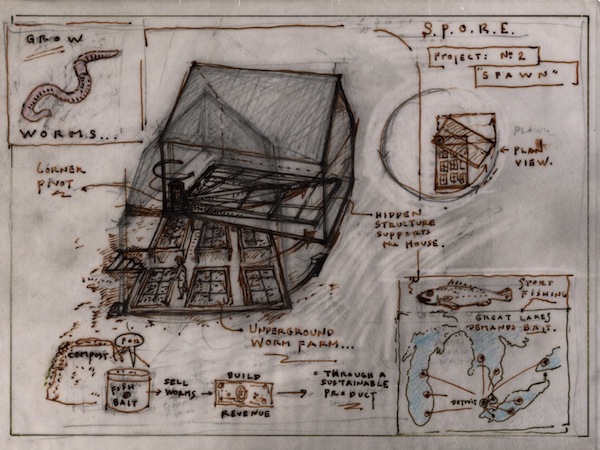Mel Chin
Mel Chin (b. 1951, Houston, TX) works in Land art, or Earthworks. He has created a vast amount of work in many different mediums. His pieces have many different themes—political, environmental, conceptual, minimalistic, ecological, and sociological.
One of Chin’s most well-known works is Revival field, made between 1990 and 1993. Set outdoors, the project took place at a test site that contained metal waste in the soil. Chin planted hyperaccumulator plants which extracted the metal waste from the soil. Within the field he placed plot markers with jars hanging off them containing zinc, copper, and lead, all containing the same ratios of the amount that was in the soil. Revival field lead to Operation Paydirt/Fundred Dollar Bill Project, which began in 2007 and is ongoing. Fundred Dollar Bill Project attempts to reduce the amount of lead in New Orleans, Los Angeles, and Oakland soil. This is achieved by spreading refined fishbone-based calcium phosphate on the soil. To fund the project, Chin has enlisted art teachers around the United States to have their students draw hundred dollar bills. After the the children complete their money it is placed in an armored truck. Once Chin has collected three million dollars in hand-drawn bills, Chin will take the truck to Washington, D.C. and attempt to exchange it for real money to support detoxifying lead laden soil.
Another inspiring project of Chin’s is S.P.A.W.N., which stands for Special Projects: Agriculture, Worms, Neighborhoods. For this, he took a house in Detroit that had been abandoned after the Devil’s Night burnings and created a worm farm inside of it. In Detroit there is a large market for fishing and the particular type of worm that Chin cultivated was of value. Chin’s idea was to take desolate houses and produce something that could make a profit. The worm farm was in the basement and the top two stories of the house were set on a pivot so that the house slowly rotated as the worms moved.
Chin is a revolutionary artist who makes colossal changes to the world around him. He also manages to make works of art that are interesting on their own. Chin’s vast amount of work does more than just speak for him—it speaks for the cultures that inspire him.
For more information Chin visit:
—Iris Murphy

